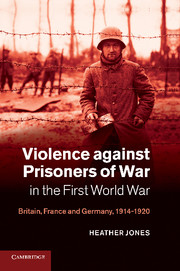Book contents
- Frontmatter
- Contents
- List of illustrations
- List of tables
- Acknowledgements
- Abbreviations
- Introduction
- Part I Propaganda representations of violence against prisoners
- Part II Violence and prisoner of war forced labour
- Part III The end of violence? Repatriation and remembrance
- 6 Contested homecomings: prisoner repatriation and the formation of memory, 1918–21
- 7 La Grande Illusion: the interwar historicisation of violence against prisoners of war, 1922–39
- Epilogue: the legacy of First World War captivity in 1939–45
- Conclusion
- Glossary of foreign terms
- Bibliography
- Index
Conclusion
Published online by Cambridge University Press: 05 January 2014
- Frontmatter
- Contents
- List of illustrations
- List of tables
- Acknowledgements
- Abbreviations
- Introduction
- Part I Propaganda representations of violence against prisoners
- Part II Violence and prisoner of war forced labour
- Part III The end of violence? Repatriation and remembrance
- 6 Contested homecomings: prisoner repatriation and the formation of memory, 1918–21
- 7 La Grande Illusion: the interwar historicisation of violence against prisoners of war, 1922–39
- Epilogue: the legacy of First World War captivity in 1939–45
- Conclusion
- Glossary of foreign terms
- Bibliography
- Index
Summary
A number of assumptions regarding the First World War can be revised in light of this study. First, mass captivity was absolutely central to the conflict. It can no longer be seen as a marginalised sideshow or treated only as part of the social history of the home front, set apart from the violence of the Great War. Nor can violence against prisoners of war be solely discussed in terms of the moment of capture on the battlefield; this book has shown that violence during captivity was also significant and that it offers valuable insights into the radicalising tendencies which the war unleashed within societies.
One of these radicalising tendencies was a drive towards extremes in the textual and visual representation of prisoners of war in all three countries which, in turn, exacerbated an escalation in violent practices against prisoners, to varying degrees in each national case. Representations emerge here as having a powerful role in shaping the public expectations of captivity and the kinds of violence against prisoners that occurred. This is the reason for the sustained focus upon the interaction between representations of violence and violent practices in this book.
- Type
- Chapter
- Information
- Violence against Prisoners of War in the First World WarBritain, France and Germany, 1914–1920, pp. 371 - 376Publisher: Cambridge University PressPrint publication year: 2011

